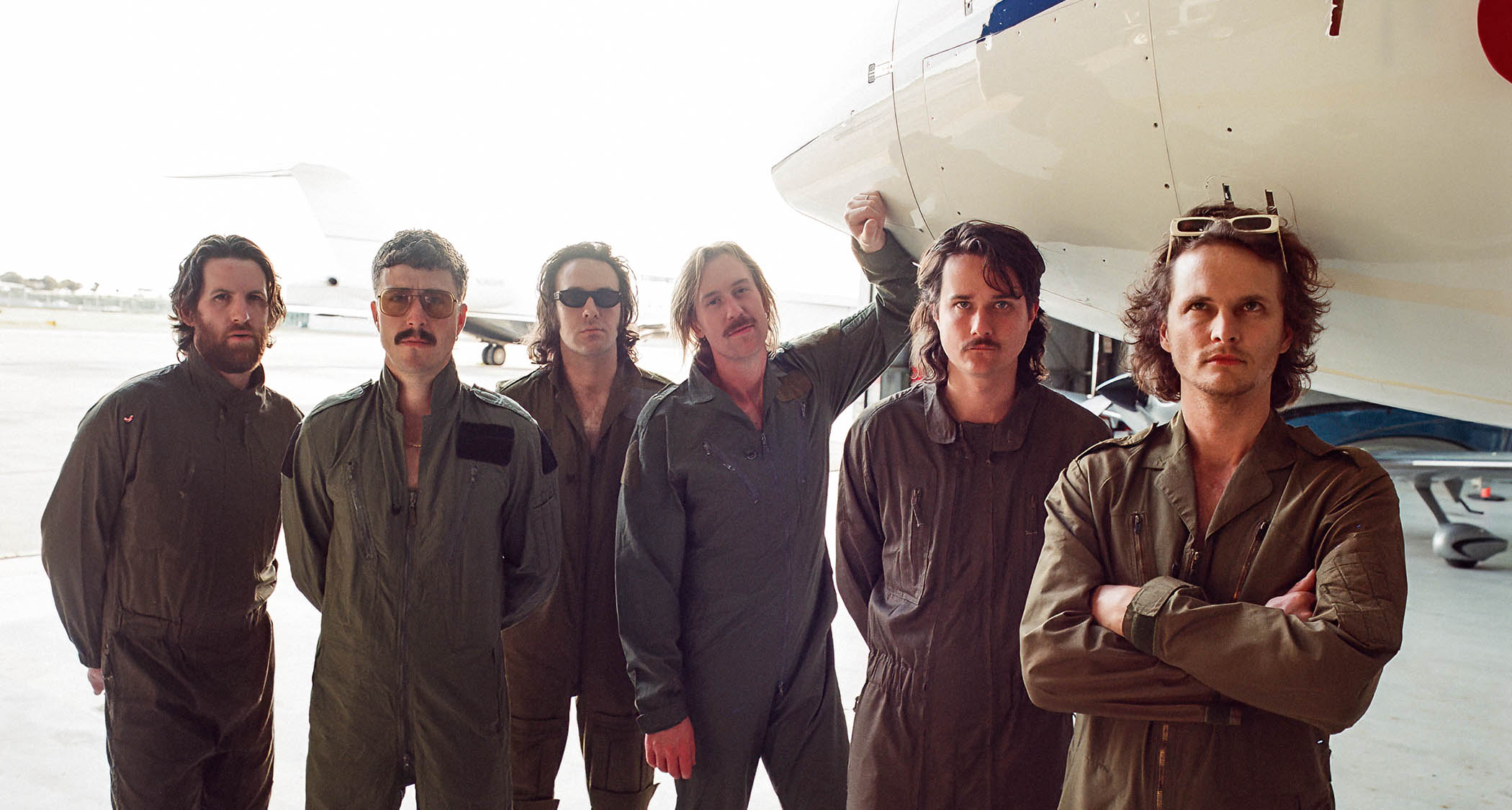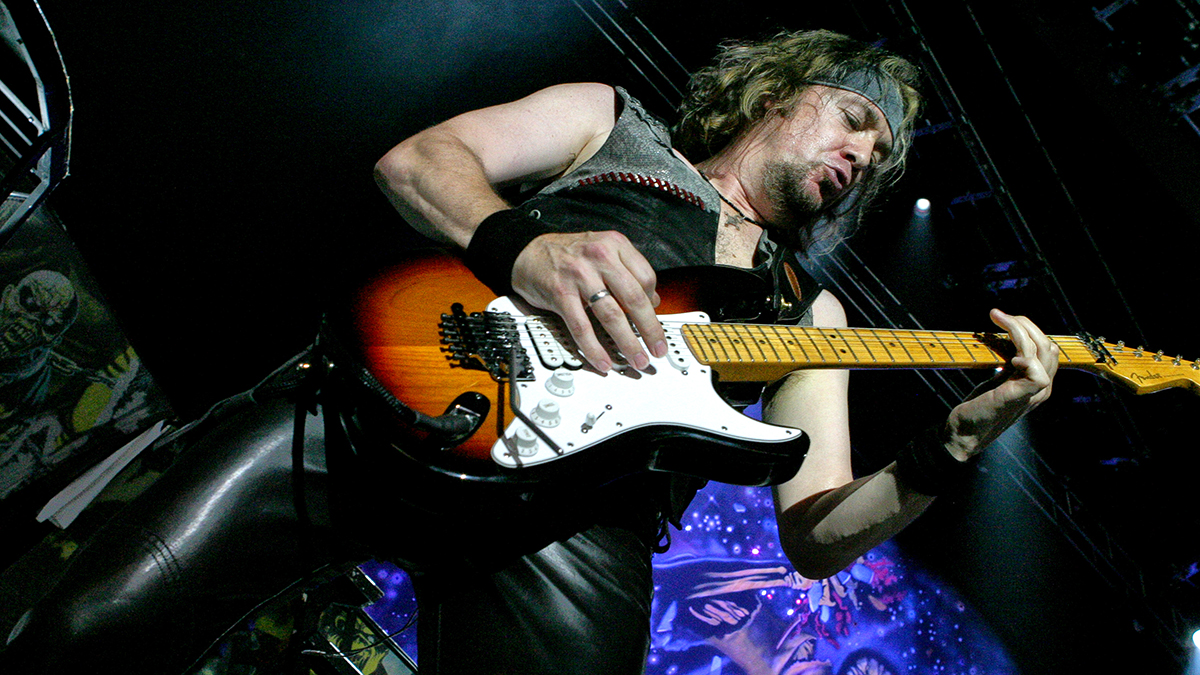“I bought eight small solid-state amps with tiny little speakers. We had no pedals on the record, just guitars, straight into the amp, turned up loud enough that it sounds nasty”: How King Gizzard & the Lizard Wizard made a left turn – into blues rock
Flight b741 sees the prodigious band making nasty sounds beautiful and “going for the take that had the boogie!” on a trip that reimagines ‘70s rock nostalgia

Just where should the uninitiated start with a band like King Gizzard & The Lizard Wizard, who since forming in 2010 have already spawned 26 studio albums, and whose omnivorous stylistic appetites have led them by the nose through garage rock, psych-rock, synth-driven krautrock, microtonal avant-gardism, heavy metal and prog?
This is the band with the creative audacity to conceive of a seven-suite concept album tied to Greek scalar modalities, and went into the studio to record it with little more than that idea in that Lizard Wizard brain of theirs and the determination to jam it out and make it happen.
Well, there’s always a strong case for starting at the beginning. But if you were to pick up their latest, Flight b741, you’d be all right, too, because this recording boils the Gizzard down to its quintessence, a full-flavoured mother sauce offering a taste of exactly where they’re coming from.
This is the sound of the Australian sextet returning to the musical womb, a band’s spirit restored to factory settings, playing the sort of ’70s rock and sun-kissed Americana that comes so naturally that it could well be something the central nervous system could take care of.
“We’ve made a lot of records where we’ve challenged ourselves to push outside of what we are comfortable with,” says Stu Mackenzie, the band’s leader, guitarist, vocalist and multi-instrumentalist. “I think we have made some of our most interesting music – the stuff I’m most proud of – in that mode, and that is sometimes the right thing to do.
“But sometimes the right thing to do is just shoot from the hip and do the gut instinct thing, and that is what this was.
“On a stylistic level, this is the music that we make when we are warming up. This is the music that we make when we just throw our guitars on and noodle around. It is the music that we are probably jamming on when we are doing a soundcheck.”
All the latest guitar news, interviews, lessons, reviews, deals and more, direct to your inbox!
If anything, Flight b741 is an anti-concept record, six guys in the studio, arranging on the spot. What they had in the beginning was “napkin sketches, a couple of thoughts” and the requisite 10,000 hours or whatever of playing together. Once they had a part, they’d do a take and move on.
Stu takes production and mixing credits, while regular front-of-house engineer Sam ‘Sammy’ Joseph engineered it and played pedal steel. There was no reason to overwork this.
“All of the guitars on the thing is just the live take,” Stu says. “That’s just in the room. We could have done these takes a lot better, probably, perfected the performance better. But we were just going for the take that had the boogie! That was what was important.”
Everyone in the band is a multi-instrumentalist and there’s a musical agility that comes with that. Stu says their musical understanding is like the ability to finish one another’s sentences. Their approach to vocals on Flight b741, which saw everyone taking a turn on the mic before passing it on, gave everyone a voice – including Michael ‘Cavs’ Cavanagh , whom you’d typically find on the drums – and left them with a rotating cast of lead vocalists throughout the record.

“We’d pass the mic on and get everyone to share their perspective on whatever the song was about,” Stu says. “We did all the vocal recordings, all six of us standing around, two microphones, one person who is doing the lead and the other five standing around the other mic, and we were facing each other in a little semicircle.
“I think we did it for over a week. We just stood in front of each other with two mics and pieced together all the vocals. As we went, the people who would be doing backing vocals would be spurring the lead singer on. We had a lot of fun doing it and it gave the record a sound.”
What they came up with was huge, insistent melodies and pop hooks to present what is essentially elemental rock ’n’ roll on a higher plane. Flight b741 harkens back to the creatively fertile 1970s, when rock would abut blues, country, funk, R&B, and dipping in and out was de rigueur.
With another treatment, or, let’s get real, in lesser hands, some of these riffs might have sounded like reheats from a James Gang rehearsal session in ’73, from boogie blues 101, and yet trampled under the Gizz’s unique rhythmic footprint, and with those vocals foregrounding a melody – and the sentiment behind it – they make you feel like you are hearing this art form for the very first time.
Some lead parts, like the reedy quasi-horn tones on Antarctica, sound as though they walked off a record by The Guess Who.
You could hear all kinds of references – Steve Miller Band, The Band, The Byrds – and you would not be hallucinating. It’s just that, if they are there pop-cultural touchstones, then they are there by osmosis, because making music like this is intimidating enough without thinking of the names and faces and history behind the sound.
“You are right about this type of music being intimidating,” says Stu. “And that is why it has taken us this long, to album 26 or whatever it is, to do this – even though we love this kind of music.
“If you ask people what are the greatest songs ever written, a lot of them are in this style, and there is just a lot of great music out there in the world already that is kind of like this, and that has never been what we have intended do to.
“‘Let’s make music like all the great albums that we love!’ That’s actually not what I want to do. That’s not really the goal. I’d rather create something that I wish existed but doesn’t exist yet. But sometimes you’ve just got to do what is right, and we have injected enough things into it to feel creatively jazzed.”
Press play and the first stop is Mirage City; an elemental melody takes flight, extending its wings across the stereo spread. This is exactly what Stu is talking about. It could be a nursery rhyme, an old folk Americana tune, but it sounds like something you could soundtrack a New Hollywood movie with. It starts, stops and starts again. It is hopeful but bittersweet, its ebb and flow, tension and release, establishes the emotional cadence of the record.
“All music is tension and release. It’s on the micro and the macro," says Stu. “I’ve learned to be a bit better with all that just from the shows being a little more improvised We’re doing that live, in real time, with each other, and in an entirely improvised way, and that is something that we have all got a bit better at getting onto the record. That is what’s going on in Mirage City.
“That intro was not really part of the song. It was just kind of like… played! ‘Is that wrong? Where’s that gone!?’ Then we started the song and that intro turned into the outro, which is also not part of the song… The song was originally just that middle part.”
An out-of-tune piano and an old battered National KX-88 keyboard became essential, adding honky-tonk wonk and retro organ mojo to fill out the mix. The KX-88 occupies all the frequencies that the squirrelly, wiry guitars miss, and it became this tonal emulsifier bringing everything together, appearing on every song.
The Gizz have access to plenty of keys, but Stu doesn’t think they’ve ever had anything like this. “It just had the hugest vibe,” he says. “It’s, like, out of tune! And it’s just got this janky preset sounds on it, almost like every combination of the sounds on it sounded amazing.”
It needed to be dirty and fun and silly, and just feral. But also it needed to be melodic and beautiful, too. That was the line to walk
The sounds and the combinations thereof are crucial in making this recording work. Every detail matters, even if said details were thrown down in the heat of the moment. Guitars are at the forefront but their mission objectives on Flight b741 were to support those vocal melodies and add some wild electric heat to the sound.
“It needed to be dirty and fun and silly, and just feral,” Stu says. “But also it needed to be melodic and beautiful, too. That was the line to walk. I’m not sure that we ever spoke about that, but that was just known.”
The guitars often sound toasted, broken, pushed to the point where it’s hard to tell at times if it’s a real guitar.
On Sad Pilot, which manages to be both a relaxed-tempo boogie number and a mental health epiphany, single notes issue forth like a skronky organ, chords a warm, muted scratch. Raw Feel has a riff that sounds like it was processed by a prototype fuzz from the early ’60s, but there were no pedals on this record besides a boost pedal.
And for a record that sounds expensive – a testimony to Mackenzie’s skills in mixing this down to a Tascam eight-track cassette – the guitar tones couldn’t have come much cheaper. Stu used his Yamaha SG-2A and Hagstrom 12-string. Joey Walker and Cook Craig shared the latter’s Novo (Stu forgets the exact model). There were no vintage tube amps, no state-of-the-art modellers in the studio, just the cheapest practice amps Stu could find.
![King Gizzard & The Lizard Wizard - Cellophane (2014 [2D] enhanced De-Anaglyphic restoration) - YouTube](https://img.youtube.com/vi/9WpXM4LQUCA/maxresdefault.jpg)
“I used to teach guitar. I used to teach kids and teenagers when I was a teenager myself,” he says. “People would always come in with these tiny amps, just the classic thirty-dollar amps you can buy at the pawnshop. It’s just the cheapest way to get started with electric guitar, and sometimes these things would sound amazing if you cranked them up loud enough.
We had no pedals on the record, just guitars, straight into the amp, turned up loud enough so that it sounds nasty
“You crank them up to a place where they are not supposed to go, and they are distorting when they are on the clean channel… That is awesome to me. A lot of the time it’s the speaker that’s distorting, and there’s something rattling that is not supposed to be rattling, but it’s all harmonics and everything. I am hugely into that.”
Stu needed lots of them, and would hit Cash Converters in downtown Melbourne in search of them. When you think about the architecture of these small solid-state combos, they are transistorised just like drive pedals, so it makes sense that something magic will happen when you make them clip.
That’s how the hitherto unloved Peavey Decade become a must-have when it was revealed to be Josh Homme’s secret weapon on Queens Of The Stone Age’s 2002 classic Songs For The Deaf.

“I bought about six or eight, maybe,” Stu says. “I didn’t spend more than 20 or 30 bucks on any of them. They were just tiny, tiny little speakers. Sometimes they would have a little gain channel that was absolutely nasty, but usually we would have them on the clean channel and just crank them. We had no pedals on the record, just guitars, straight into the amp, turned up loud enough so that it sounds nasty.
“Some of the tones are pretty crispy, and pretty hot, pretty spicy, but in my mind it was like the-first-couple-of-Black-Sabbath-records distortion. They weren’t using tiny amps but that was the sound. It’s different from stepping on a fuzz pedal. When you roll back the volume on your guitar you can really, really clean up in a way you can’t do with pedals.”
Hitting these little solid-state amps with an extra 6dB of clean boost pushed them over the edge. When rolling back the volume and tone controls on his guitar, Stu found a sound that’s like Clapton’s ‘woman tone’ through the looking glass, all “creamy bottom but with a nasty top-end that’s just dying” – just throw a mic in front of it, press record, and you’re good to go. There’s your tone. 30 bucks, a little reverb in post. Done. Ready for takeoff…
- Flight b741 is out now.
Jonathan Horsley has been writing about guitars since 2005, playing them since 1990, and regularly contributes to publications including Guitar World, MusicRadar and Total Guitar. He uses Jazz III nylon picks, 10s during the week, 9s at the weekend, and shamefully still struggles with rhythm figure one of Van Halen’s Panama.






